
Advanced Magento 2 Developer Tools For Debugging
[Updated on May 13, 2025] Spending countless hours instead of minutes troubleshooting issues in your store? Magento 2 developer tools streamline the debugging process to identify problems.
This article lists and explains the top developer tools and their benefits.
Key Takeaways
-
Magento 2 developer tools for debugging, code editing, and testing tasks.
-
Developer tools automate workflows for faster Magento website development.
-
Front-end tools with template hints and UI component inspection features.
-
Debugging tools for PHP, database, and API work in Magento 2.
-
Productivity tools for code generation and common task simplification.
-
Proper tools lead to better code quality and store performance.
-
Easy integration with your Magento admin and development environment.
[Updated on May 13, 2025] Spending countless hours instead of minutes troubleshooting issues in your store? Magento 2 developer tools streamline the debugging process to identify problems.
This article lists and explains the top developer tools and their benefits.
Key Takeaways
-
Magento 2 developer tools for debugging, code editing, and testing tasks.
-
Developer tools automate workflows for faster Magento website development.
-
Front-end tools with template hints and UI component inspection features.
-
Debugging tools for PHP, database, and API work in Magento 2.
-
Productivity tools for code generation and common task simplification.
-
Proper tools lead to better code quality and store performance.
-
Easy integration with your Magento admin and development environment.
What are Developer Tools in Magento 2?
Developer tools are unique software utilities. They streamline workflows, enhance debugging efficiency, and optimize performance. They address code errors, performance bottlenecks, and deployment complexities while improving collaboration.
Here are a few common benefits of using these tools:
-
Time savings through automation of repetitive tasks
-
Improved code quality and performance
-
Easier identification and resolution of bugs
-
Streamlined navigation of Magento's complex architecture
-
Enhanced ability to customize the Magento admin interface
-
Better database management capabilities
-
More efficient extension development
Importance of Magento Developer Tools
1. Streamline Your Development Workflow
Magento developer tools help streamline your development process. They automate repetitive tasks so you can focus on building great features.
For example, code generation tools create boilerplate code for modules and controllers. It saves significant time compared to coding from scratch.
2. Increased Productivity and Efficiency
The right tools make Magento developers more productive and efficient. IDEs like PHPStorm offer
-
Intelligent code completion,
-
Refactoring
-
Debugging.
It helps you write cleaner code faster.
Xdebug is another tool that makes debugging PHP code much easier. It can save hours of development time.
3. Ensure Code Quality and Performance
Developer tools help ensure your Magento code is high-quality and performant. For instance, the coding standard checks that your code follows best practices.
Performance profiling tools identify bottlenecks and slow queries. Addressing these early leads to a faster, more stable site.
4. Simplify Frontend Development
Magento frontend development is complex, but tools make it easier. Template path hints show which template renders each element. It is invaluable for customizing themes.
Browser extensions let you inspect layout XML, blocks, and template variables.
5. Enhance Testing and Debugging
Solid testing prevents bugs and regressions as your site grows. PHPUnit integrates with Magento for unit and integration testing. Selenium automates front-end testing in real browsers.
Debugging tools like Xdebug and the Magento developer toolbar provide deep insight into
-
Requests
-
Database queries
6. Collaborate with Your Team
When working on a Magento site with a team, tools foster collaboration. Version control with Git tracks changes and handles merging. Vagrant lets developers share the same environment setup.
Continuous integration tools run your test suite on code changes before deploying.
7. Leverage the Magento Community
The Magento community has created many powerful open-source tools. Third-party extensions and metz98/n98-magerun provide useful CLI commands. The Magento 2 bash-completion package saves keystrokes.
Magento Stack Exchange is an invaluable resource for finding answers from veteran developers. Leveraging these community tools and knowledge can speed up your work.
Top Magento Developer Tools Divided Category-wise
| Category | Top Tools |
|---|---|
| Debugging | Magento Debug, Xdebug, Magento Developer Toolbar |
| IDE / Code Editors | PHPStorm, Visual Studio Code, Sublime Text |
| Testing | PHPUnit, EcomDev PHPUnit, Selenium, Jasmine (JS) |
| Frontend | Template Path Hints, Commerce Bug, Vue Storefront, Grunt (JS) |
| Database | Adminer, MySQL Workbench, Magento 2 Database Diagram |
| Performance | Magento Profiler, Blackfire, New Relic |
| Productivity | N98-magerun2, Pestle, Warden |
Key Features of Select Magento Developer Tools
1. Debugging Tools
I. Magento Debug

Magento Debug provides a clean interface for inspecting request data. It helps identify issues during development. It is like the Magento Developer Toolbar, but more streamlined
Key Highlights:
-
Shows an overview of the request flow and timings.
-
Allows inspection of request and response data and headers.
-
Displays database queries with timing and parameters.
-
Lists events dispatched during request processing.
II. Xdebug
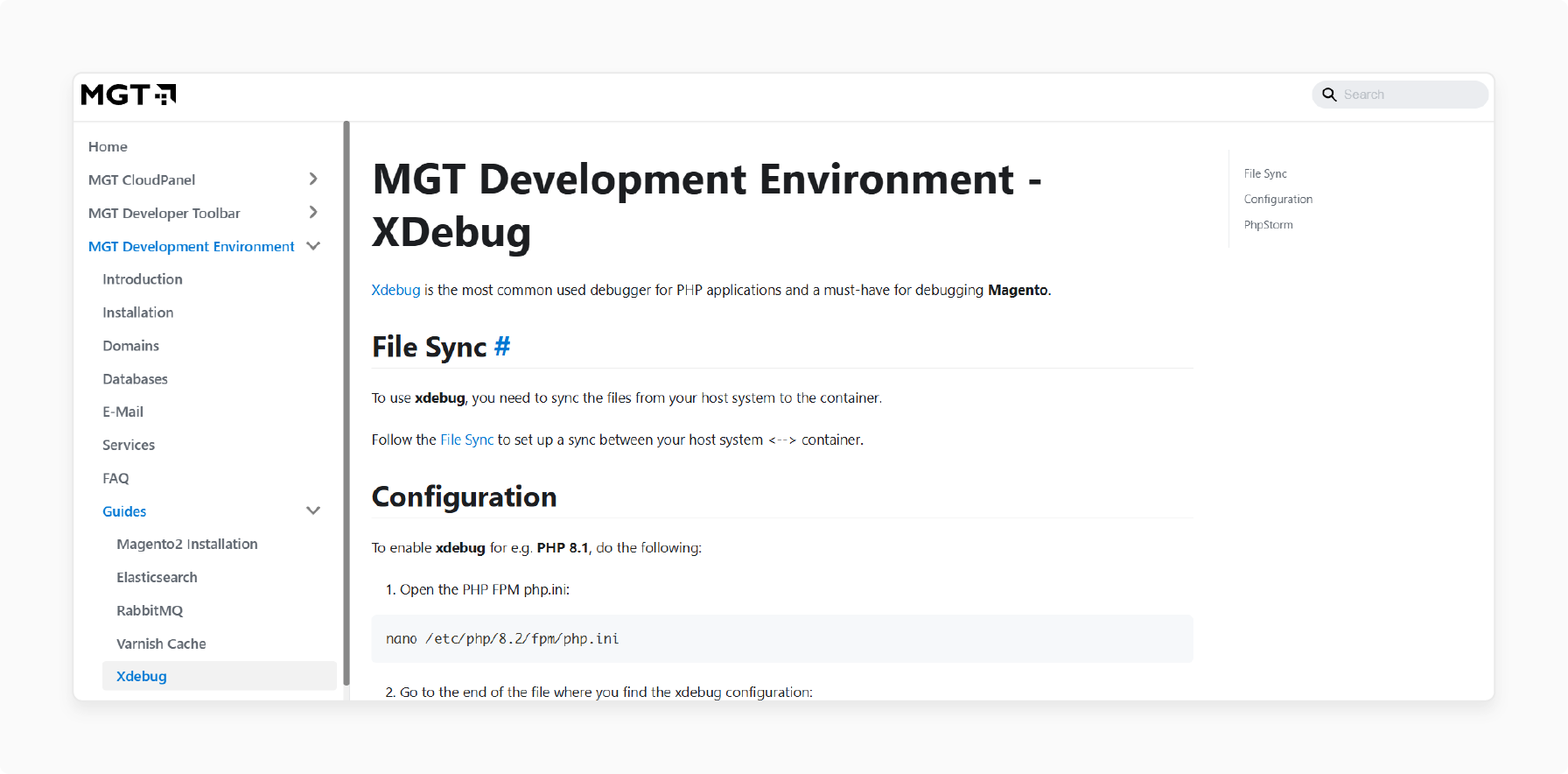
Xdebug is a powerful PHP extension for advanced debugging features. It allows setting breakpoints to pause code execution. The extension also inspects variables and stack traces. Profile code performance.
Key Highlights:
-
It supports breakpoints to pause execution and inspect the state.
-
Allows stepping through code line by line.
-
Provides tools for analyzing code coverage during testing.
-
Offers profiling to identify performance bottlenecks.
III. Magento Developer Toolbar

The Magento Developer Toolbar is a tool inside Magento that displays request information. It shows block and template structure, database queries, and performance.
Key Highlights:
-
Displays a hierarchical view of blocks and templates rendered.
-
Lists database queries with timing and parameters.
-
Provides performance metrics like load time and memory.
-
Allows quick access to configuration and log files.
2. IDE / Code Editors
I. PHPStorm
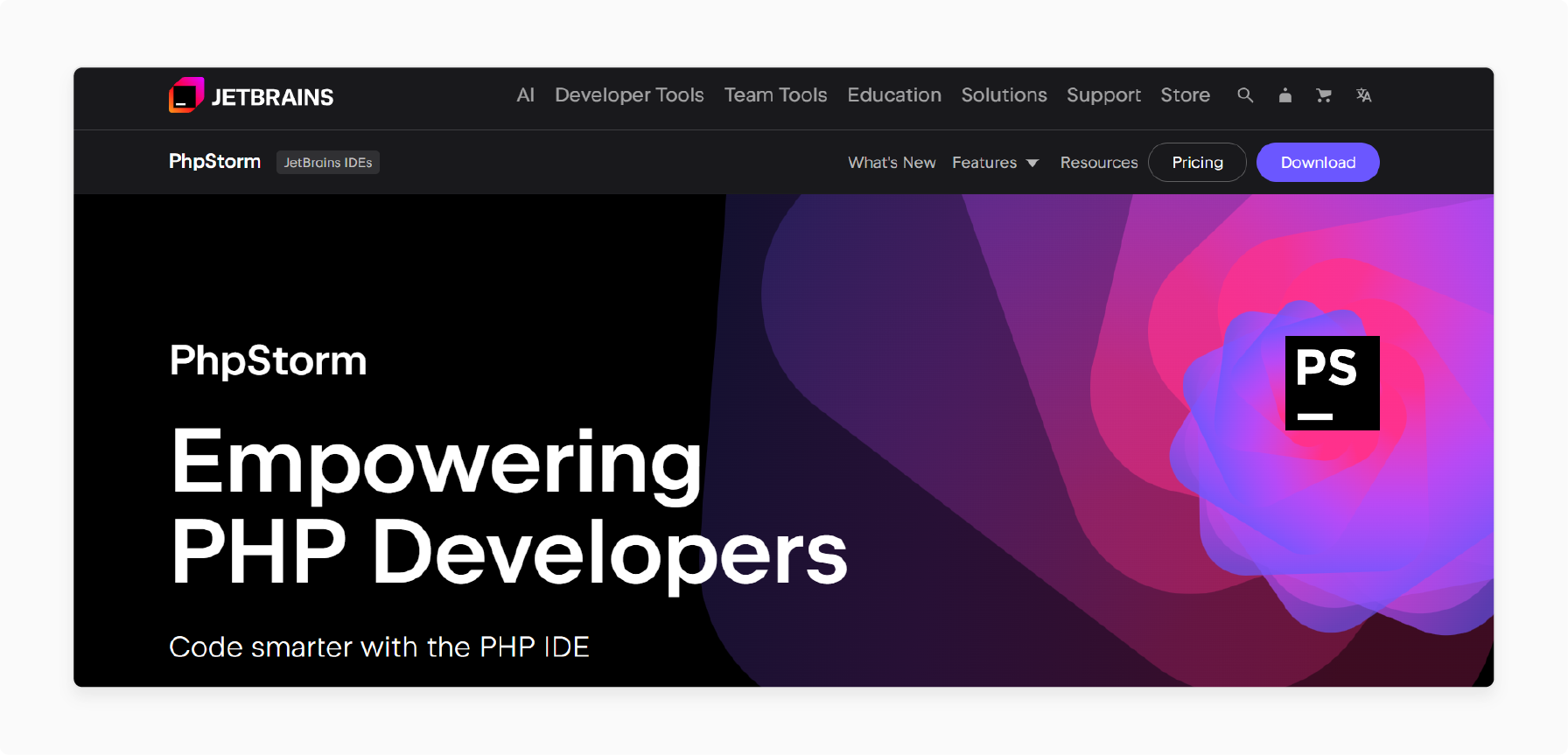
PHPStorm is a full-featured IDE designed for PHP development. It offers intelligent code completion, navigation, and refactoring. It integrates debugging and testing. The IDE has many Magento-specific plugins.
Key Highlights:
-
Provides intelligent completion and navigation based on Magento's structure.
-
Offers powerful refactoring tools to change code.
-
Integrates with Xdebug and PHPUnit for debugging and testing.
-
Supports Magento-specific code inspections and quick fixes.
PHPStorm 2025.1 includes:
-
Improved Xdebug support
-
Automatic Xdebug installation
-
.env file enhancements
-
AI Assistant updates
II. Visual Studio Code
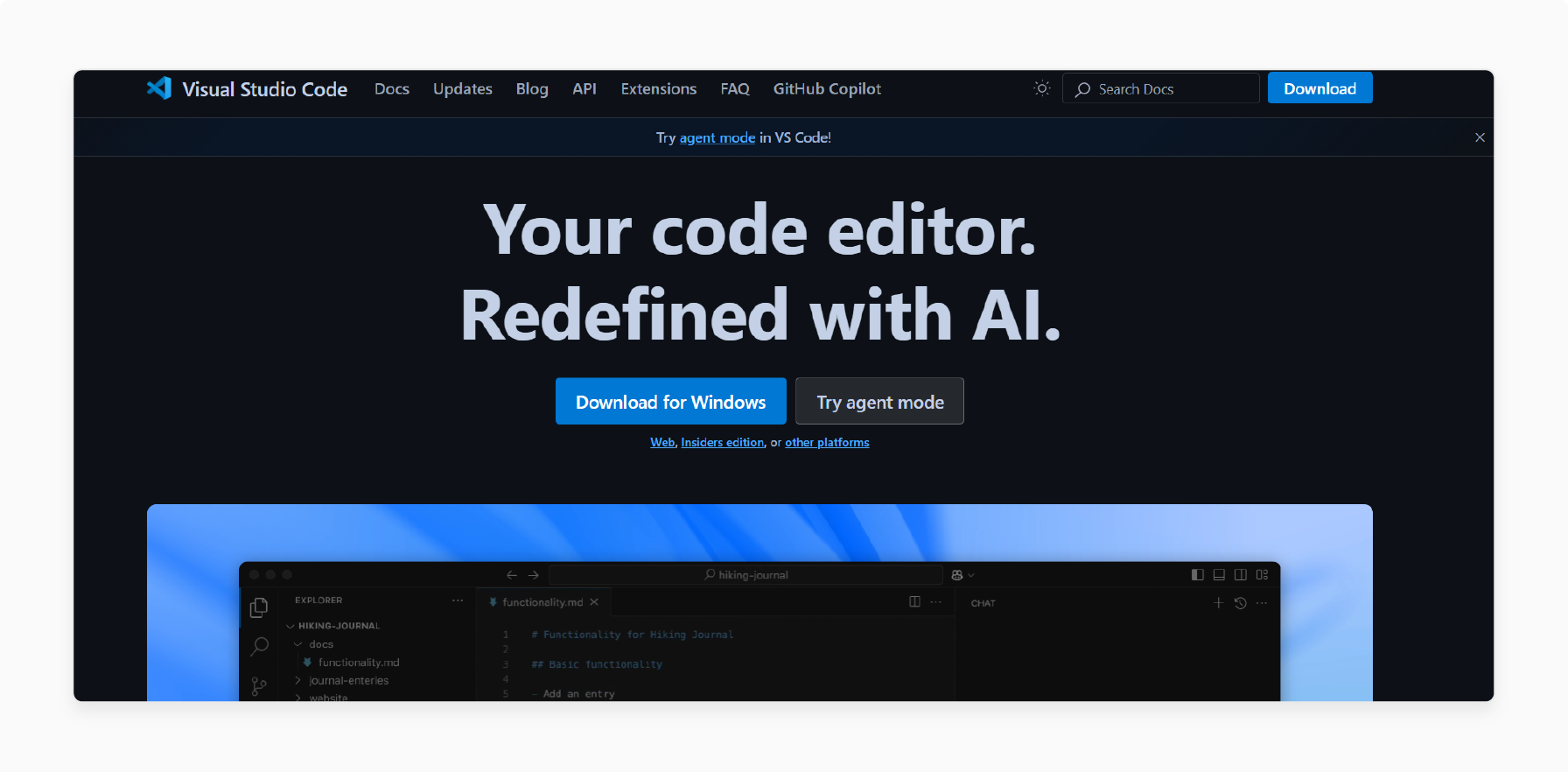
VS Code is a lightweight but extensible code editor. It has a vast library of extensions for Magento 2. The code editor is fast and customizable, popular for front-end work.
Key Highlights:
-
Offers a fast, streamlined editing experience.
-
Provides extensions for Magento 2, including IntelliSense and debugging.
-
Supports side-by-side file comparison and merging.
-
It integrates with Git and has version control out of the box.
III. Sublime Text
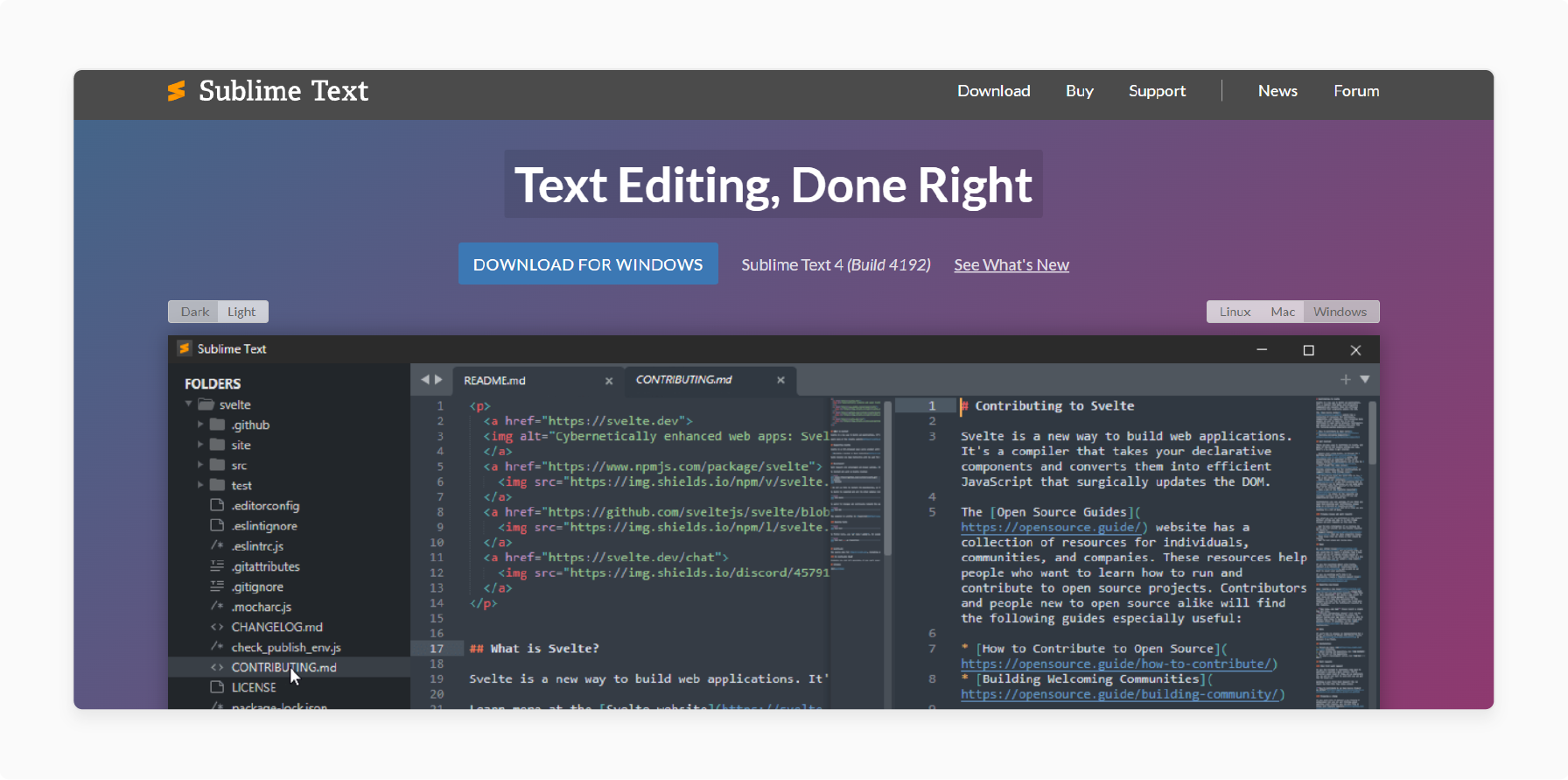
Sublime Text is a fast, cross-platform code editor known for speed. It is customizable and has an extensive package ecosystem. The editor offers powerful features like many selections and quick navigation.
Key Highlights:
-
Offers fast performance, even with large projects.
-
Provides a Python-based plugin API for extending functionality.
-
Supports split editing and quick navigation between files.
-
Offers powerful search and replace, including regular expressions.
3. Testing Tools
I. PHPUnit
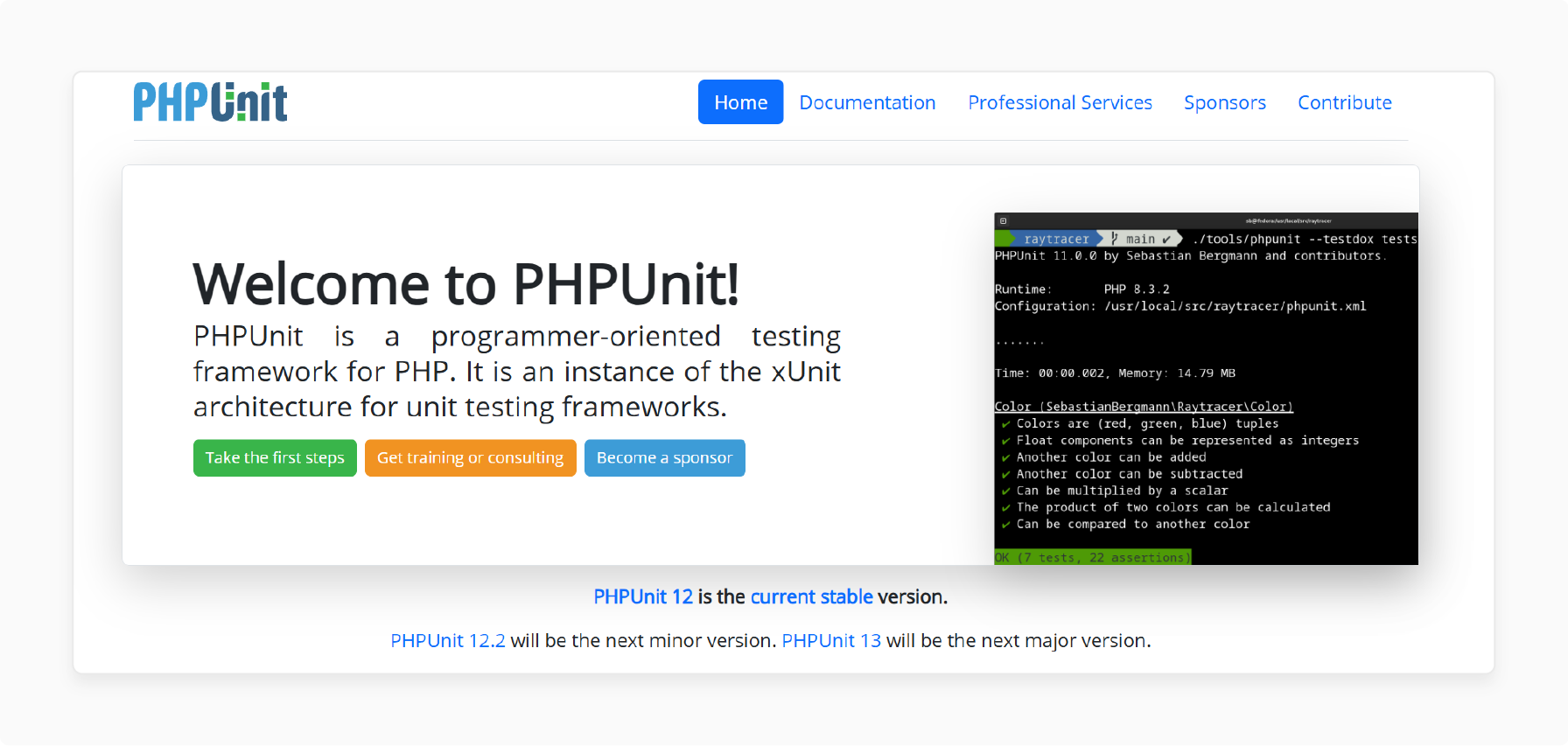
PHPUnit is a standard testing framework for Magento PHP. It allows writing and running unit tests. The framework verifies the behavior of individual classes and methods. It is a must for code quality and catching regressions.
Key Highlights:
-
Provides a robust assertion library for verifying expected outcomes.
-
Supports data providers for testing methods with many inputs.
-
Allows grouping tests into suites for organized testing.
-
Integrates with CI/CD tools for automated testing.
Magento 2.4.8 includes updated dependencies like PHPUnit 10. It enhances testing capabilities for developers.
II. EcomDev PHPUnit
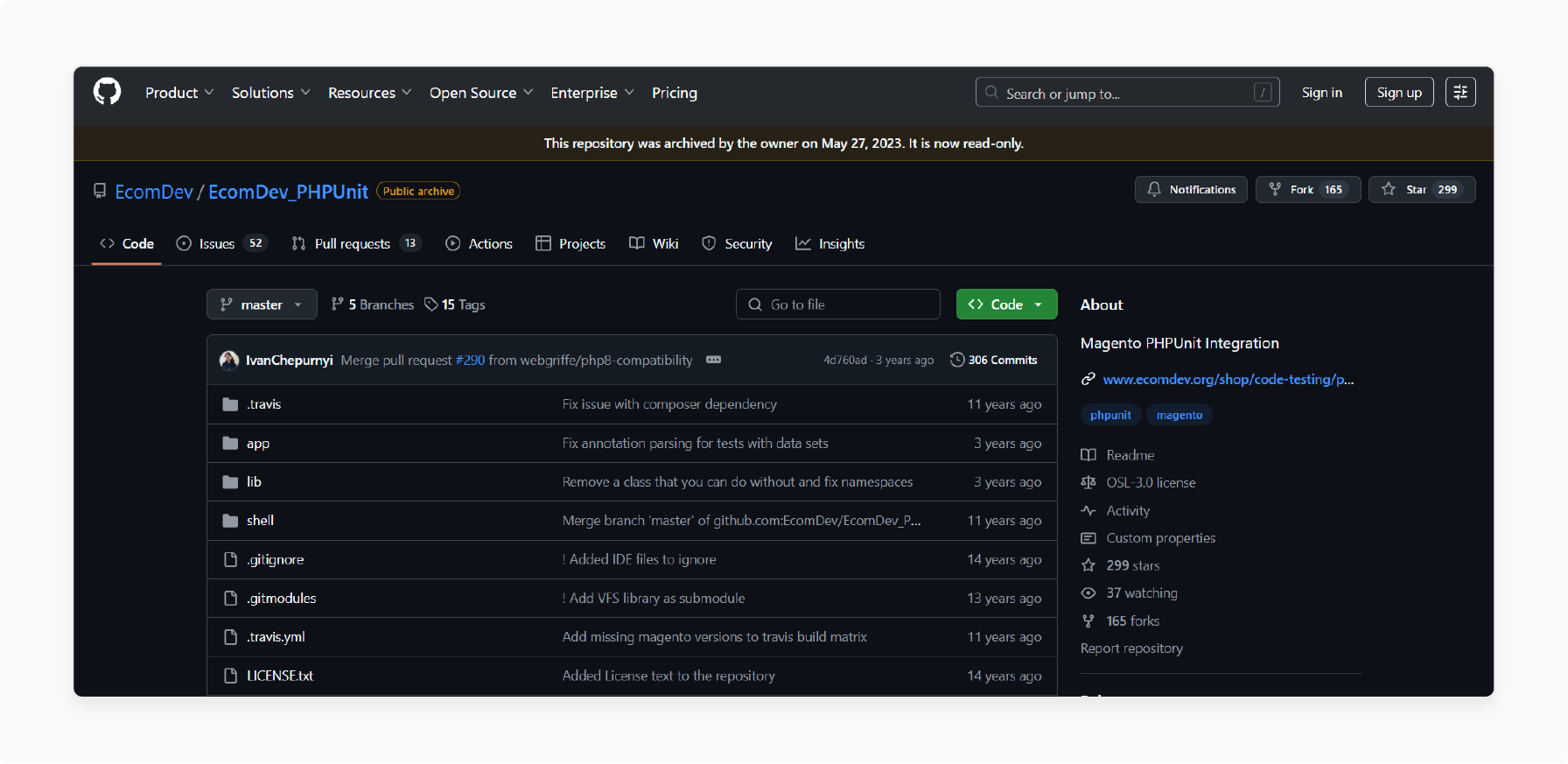
EcomDev is a Magento extension that integrating PHPUnit with the Magento framework. It provides fixtures and helpers for testing Magento functionality. The extension covers models, controllers, and blocks.
Key Highlights:
-
Offers Magento-specific assertions for testing common scenarios.
-
Provides tools for setting up test data fixtures.
-
Allows testing Magento modules in isolation with mocking.
-
Integrates with Magento's configuration and dependency injection systems.
III. Selenium
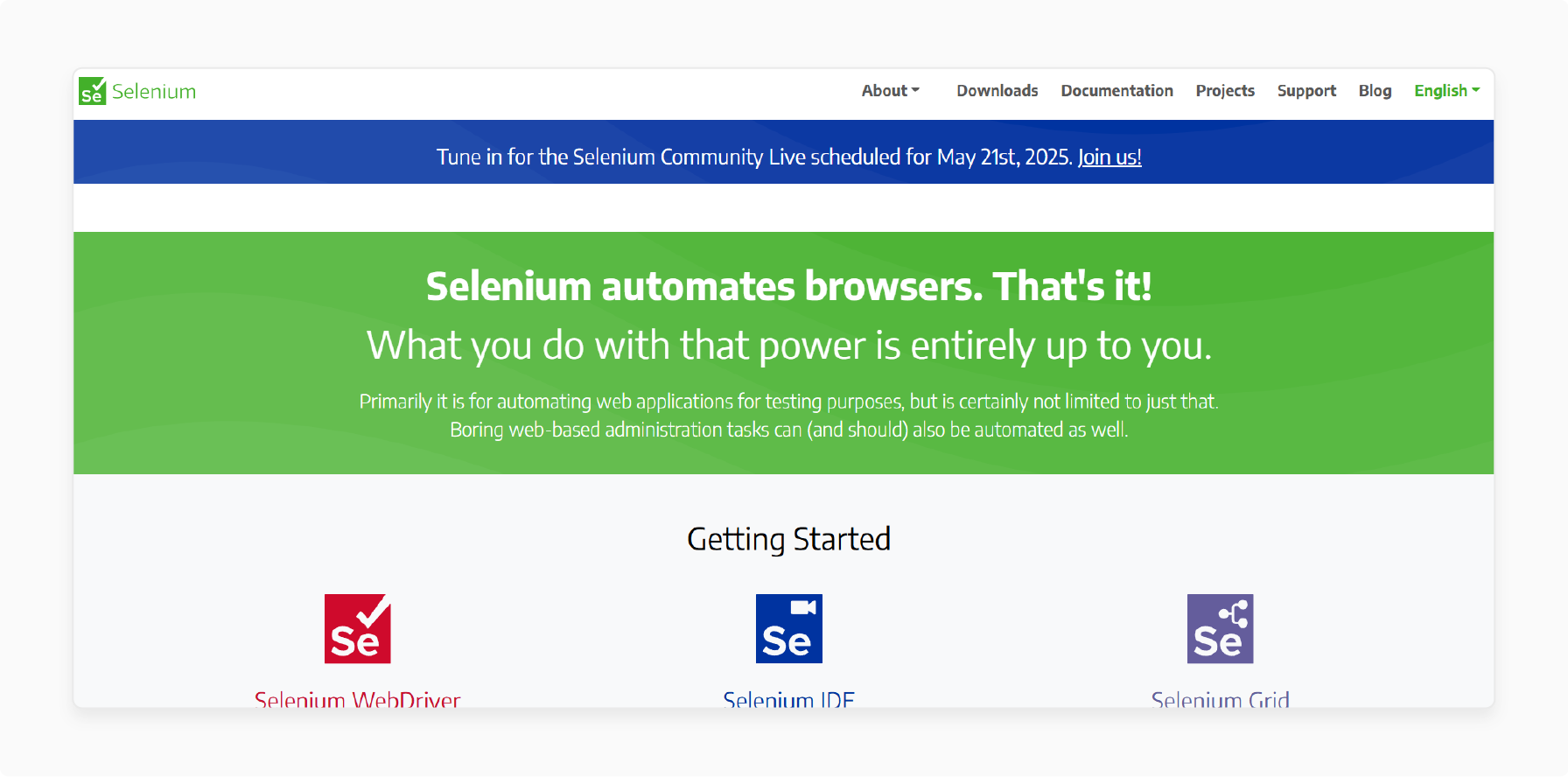
Selenium is a popular tool for automating web browsers and is used for frontend testing. It simulates user interactions like
-
clicking,
-
filling out forms, and
-
Navigating.
The tool ensures the site works as expected for users.
Key Highlights:
-
Supports automating tests in many browsers and platforms.
-
Provides WebDriver API for interacting with browsers.
-
Allows testing complex flows, like cart and checkout.
-
Can integrate with PHPUnit for end-to-end testing.
IV. Jasmine (JS)
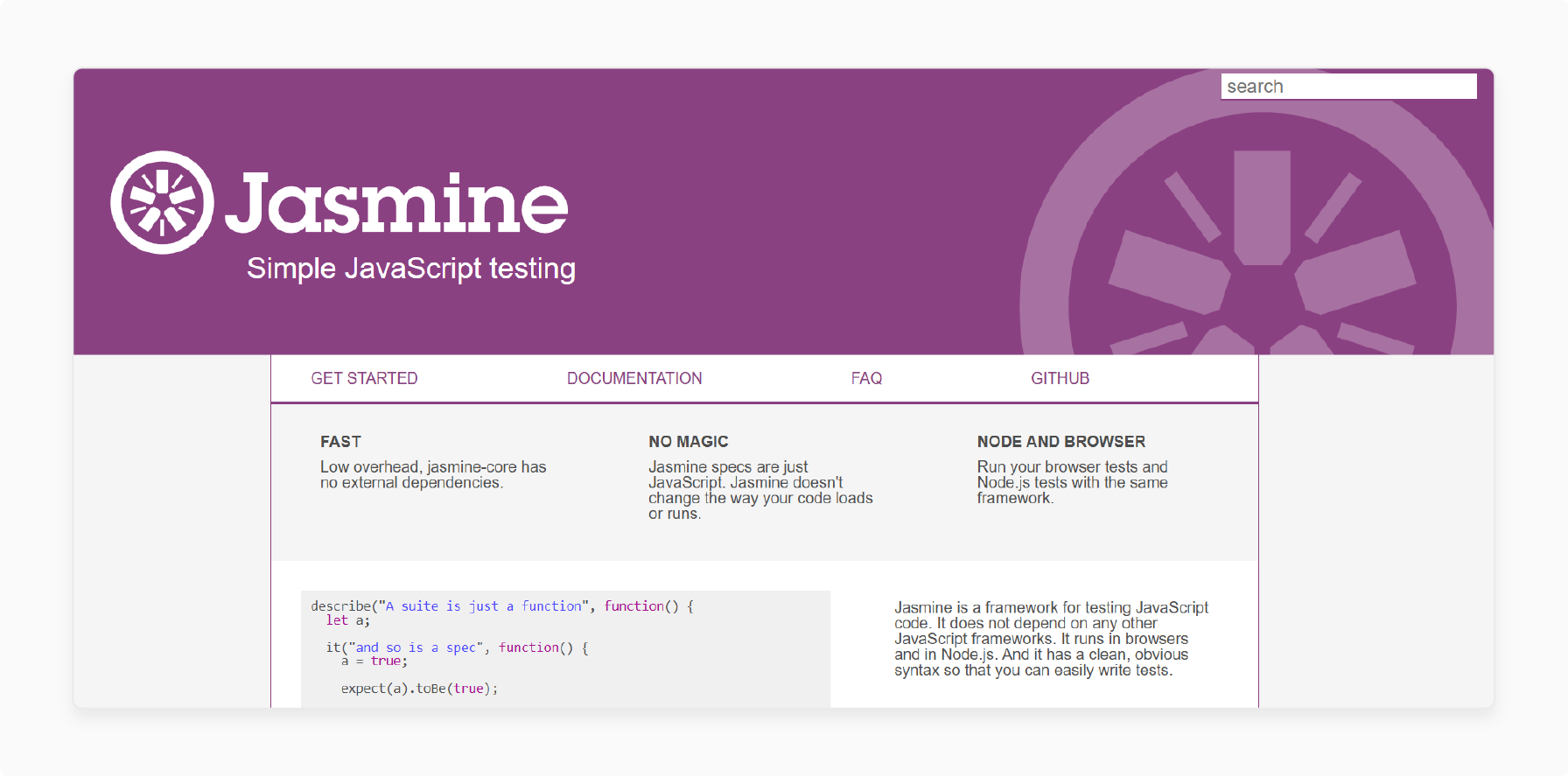
Jasmine is a behavior-driven testing framework for JavaScript. It provides a clear syntax for writing frontend unit tests. The framework covers Magento's JS modules and UI components.
Key Highlights:
-
Offers readable, expressive syntax for defining tests and assertions.
-
Supports testing asynchronous code with callbacks, promises, and async/await.
-
Provides tools for mocking dependencies and isolating subjects.
-
Can run in real browsers or headless environments.
4. Frontend Tools
I. Template Path Hints
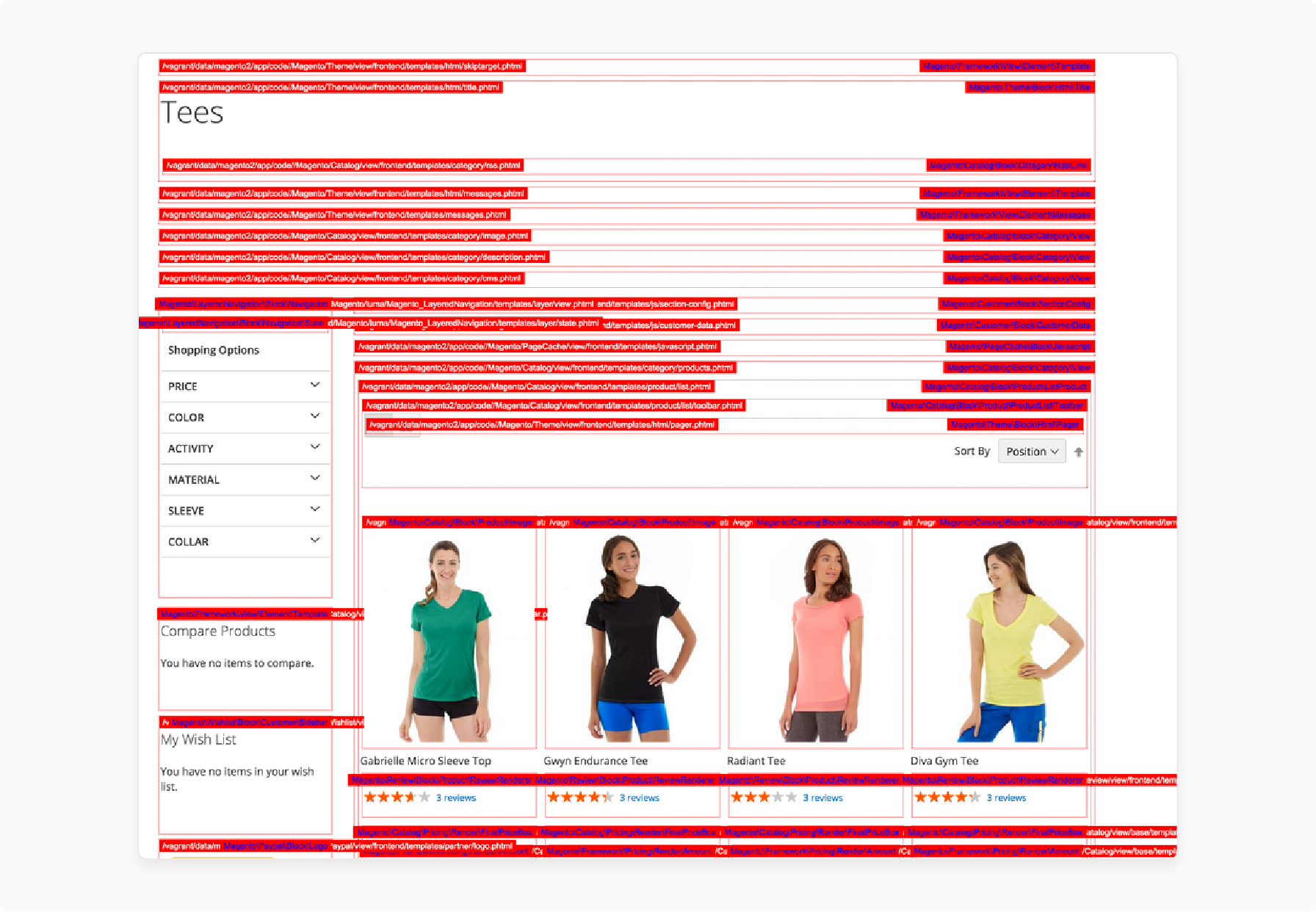
Template Path Hints is a feature that displays the path to a template file for each part of the page. It is invaluable for understanding theme systems and identifying files to change.
Key Highlights:
-
Helps frontend developers locate template files to edit.
-
Provides insight into Magento's fallback system for templates.
-
Can get enabled/disabled from the admin panel.
-
Supports both Magento 1.x and 2.x theme structures.
II. Commerce Bug
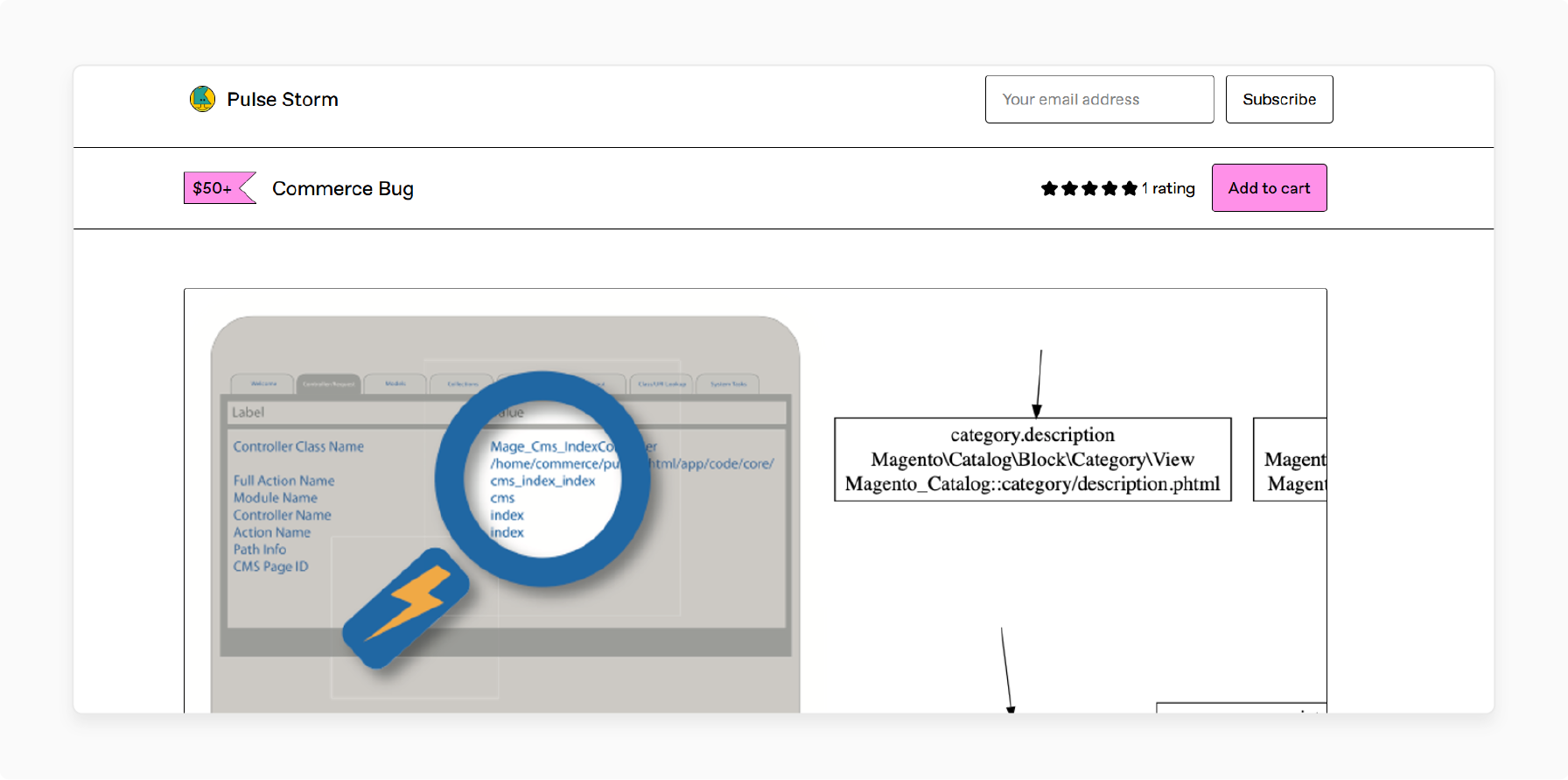
Commerce Bug is a browser extension providing advanced debugging for the Magento frontend. It allows for inspecting the layout of the browser's XML, blocks, and UI components. The extension makes it easy to see the page construction.
Key Highlights:
-
Provides a tree view of layout structure, blocks, and containers.
-
Allows inspection of block and UI component data and child components.
-
It supports modifying layout XML and observing effects in real time.
-
Offers tools for debugging Knockout.js bindings and scope.
III. Alokai (Vue Storefront)
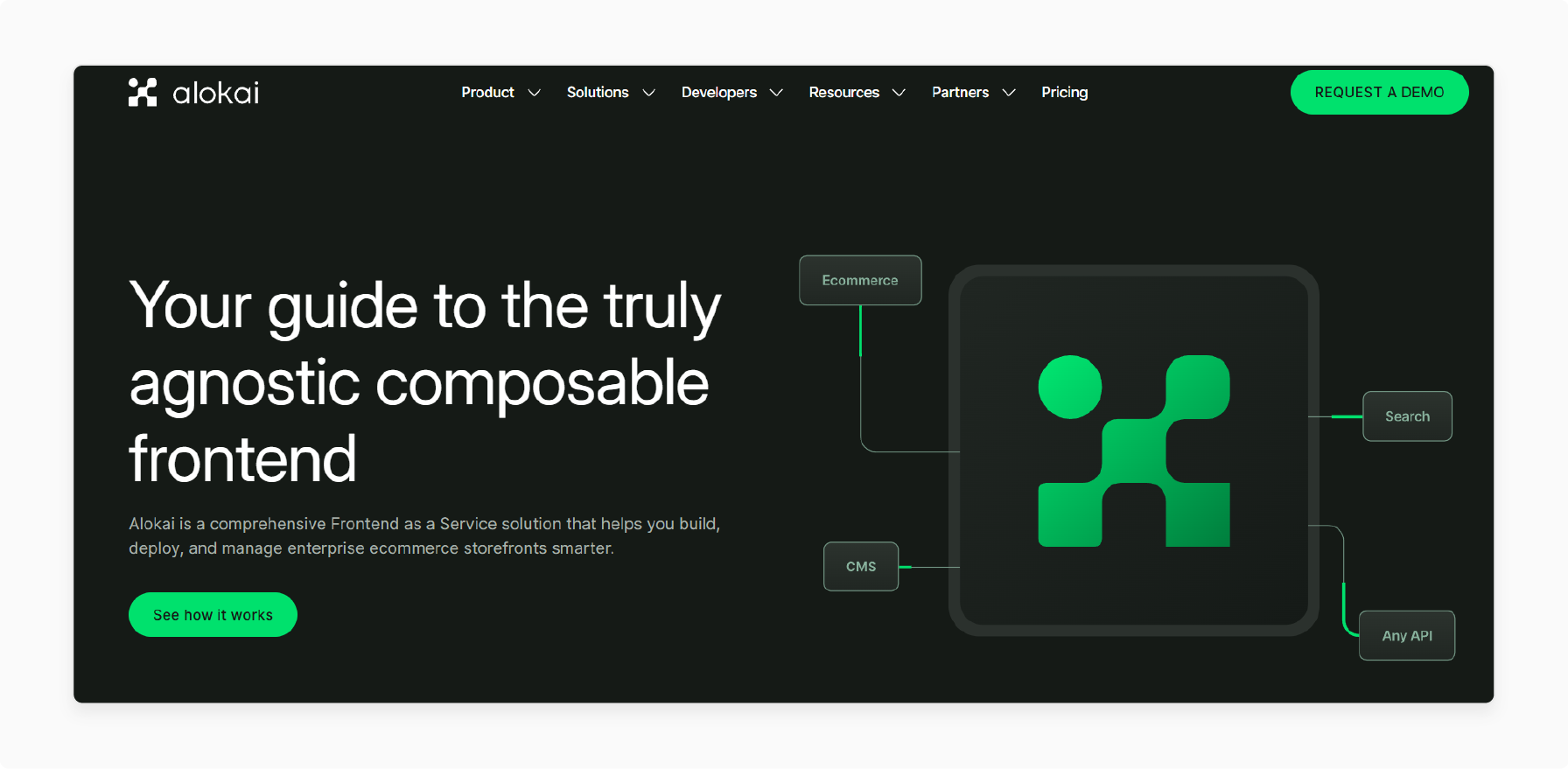
Alokai (Vue Storefront) is a framework for developing PWA and Magento headless frontends. It provides Vue. JS-based UI components and libraries for integration with Magento APIs.
Key Highlights:
-
Offers a modern, app-like frontend experience with fast performance.
-
Supports offline mode and caching for reliable slow networks.
-
Provides customizable UI components for common ecommerce features.
-
Integrates with Magento's REST and GraphQL APIs for data sync.
IV. Grunt (JS)

Grunt is a JavaScript task runner for automating frontend build processes. It can
-
compile LESS/Sass,
-
Minify CSS/JS, and
-
Optimize images.
Key Highlights:
-
Provides declarative syntax for defining tasks and dependencies.
-
Supports a wide range of plugins for common frontend tasks.
-
Can integrate with watch tasks for auto-rebuilding on changes.
-
Allows flexibility in defining custom tasks in JS.
5. Database Tools
I. Adminer
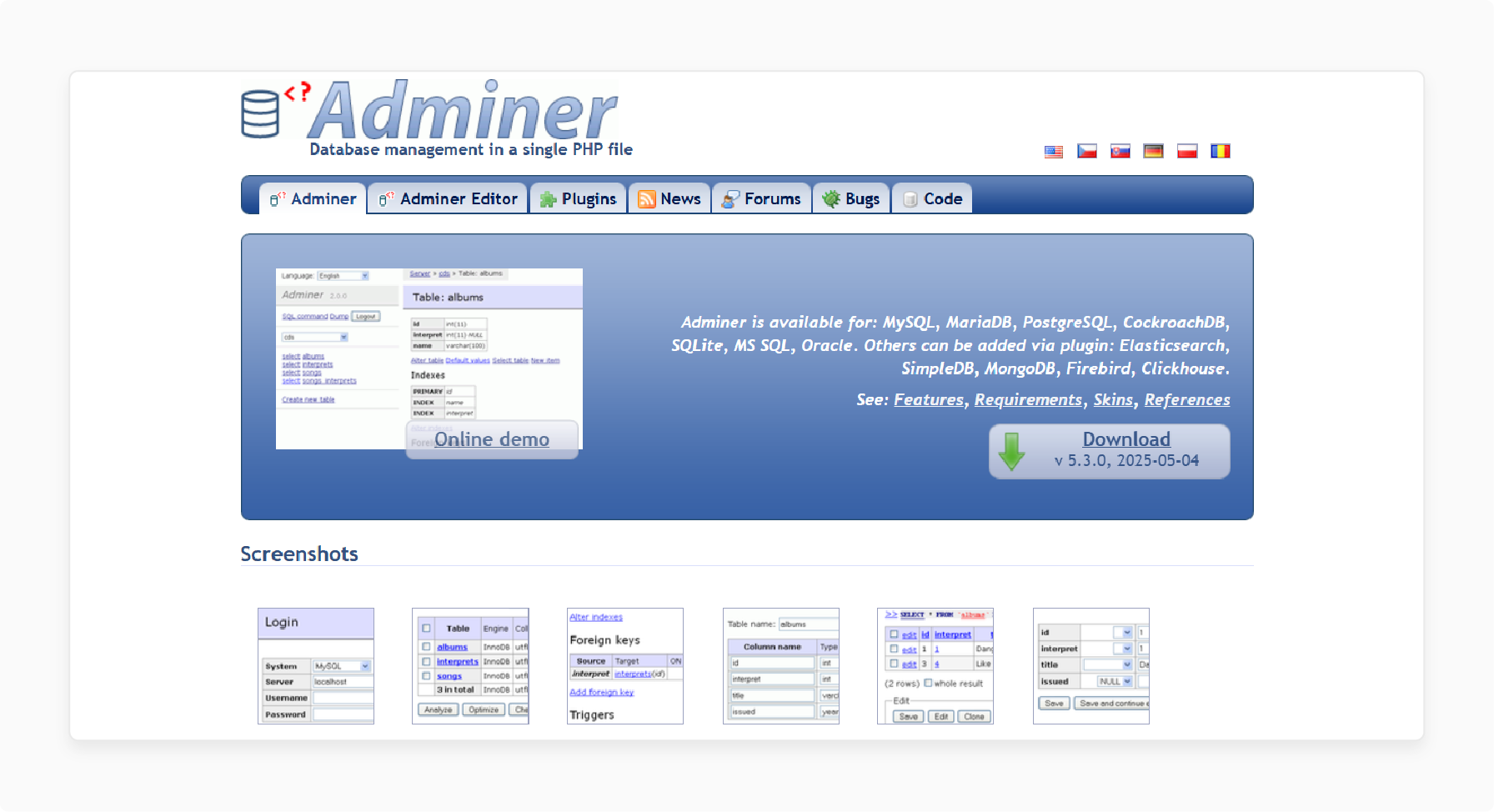
Adminer is a lightweight, web-based database management tool. It is an alternative to phpMyAdmin for Magento databases. The tool has a simpler, cleaner interface.
Key Highlights:
-
Allows browsing and searching of database tables and records.
-
Provides tools for running SQL queries and exporting data.
-
Supports many database engines, including MySQL, PostgreSQL, and SQLite.
-
Can install on a web server or run.
II. MySQL Workbench
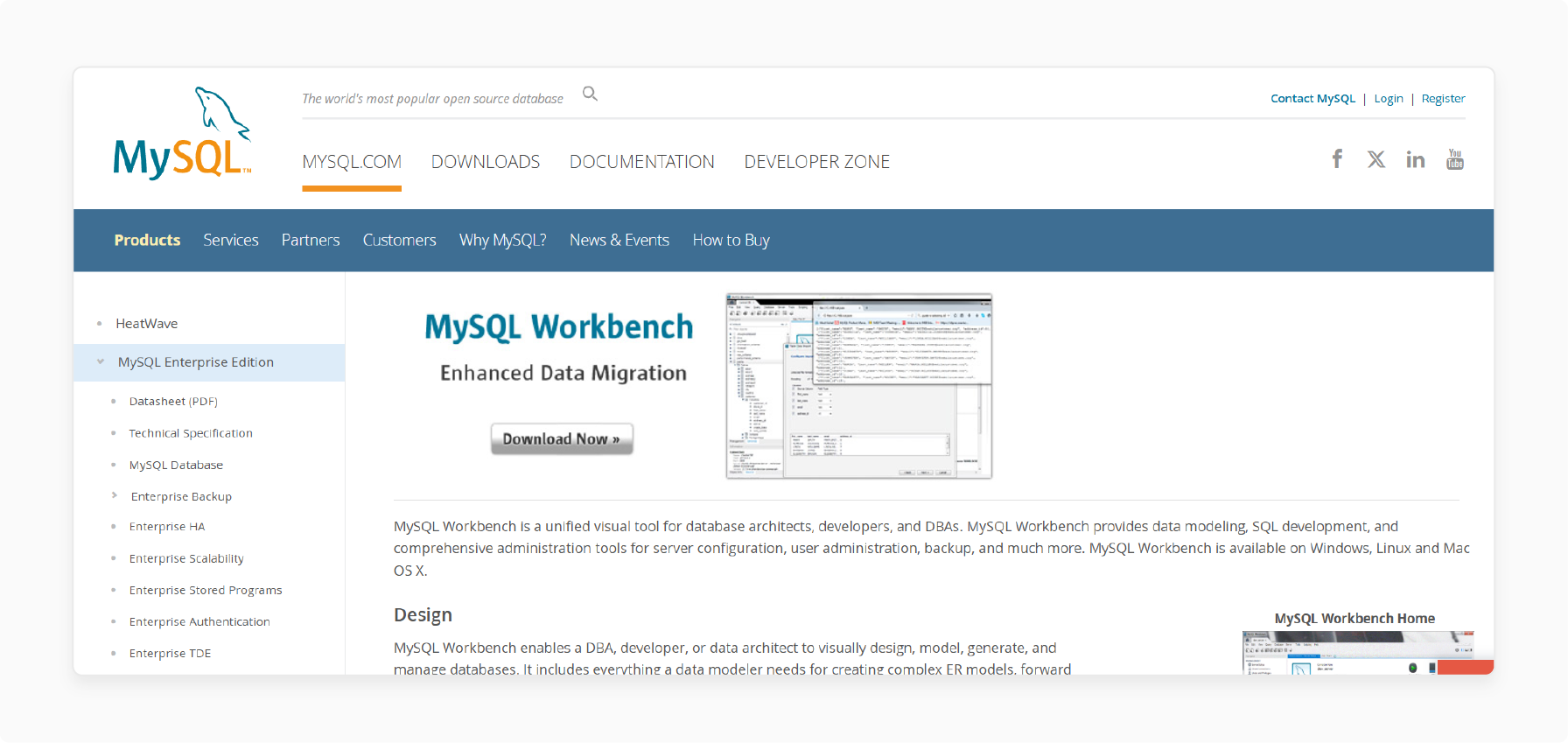
MySQL Workbench is a powerful desktop app for database design, development, and administration. The app provides visual tools for creating and modifying schemas. It also has an SQL editor for writing and optimizing queries.
Key Highlights:
-
Offers a visual interface for designing schemas and relationships.
-
Provides an SQL editor with syntax highlighting and auto-completion.
-
Supports database migration and sync across environments.
-
Includes tools for performance monitoring and query optimization.
III. Magento 2 Database Diagram
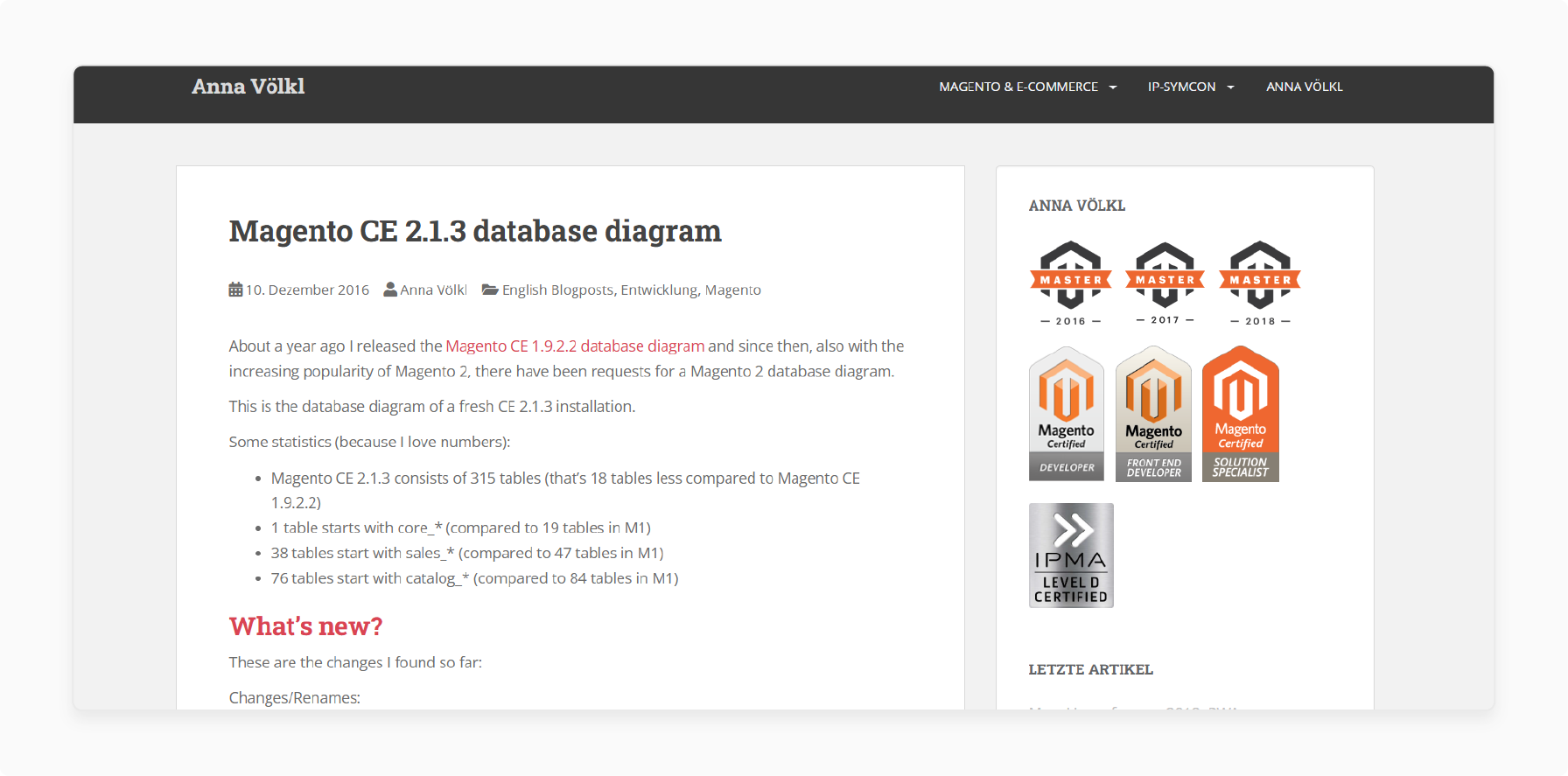
Magento 2 Database Diagram assists with visualizing the schema on Github. The tool helps developers understand table relationships and plan queries.
Key Highlights:
-
Provides a high-level overview of Magento's database structure.
-
Shows fields and relationships for each table.
-
Use it as a reference when writing custom queries or extensions.
-
Update it with each Magento release to stay current.
6. Performance Tools
I. Magento Profiler
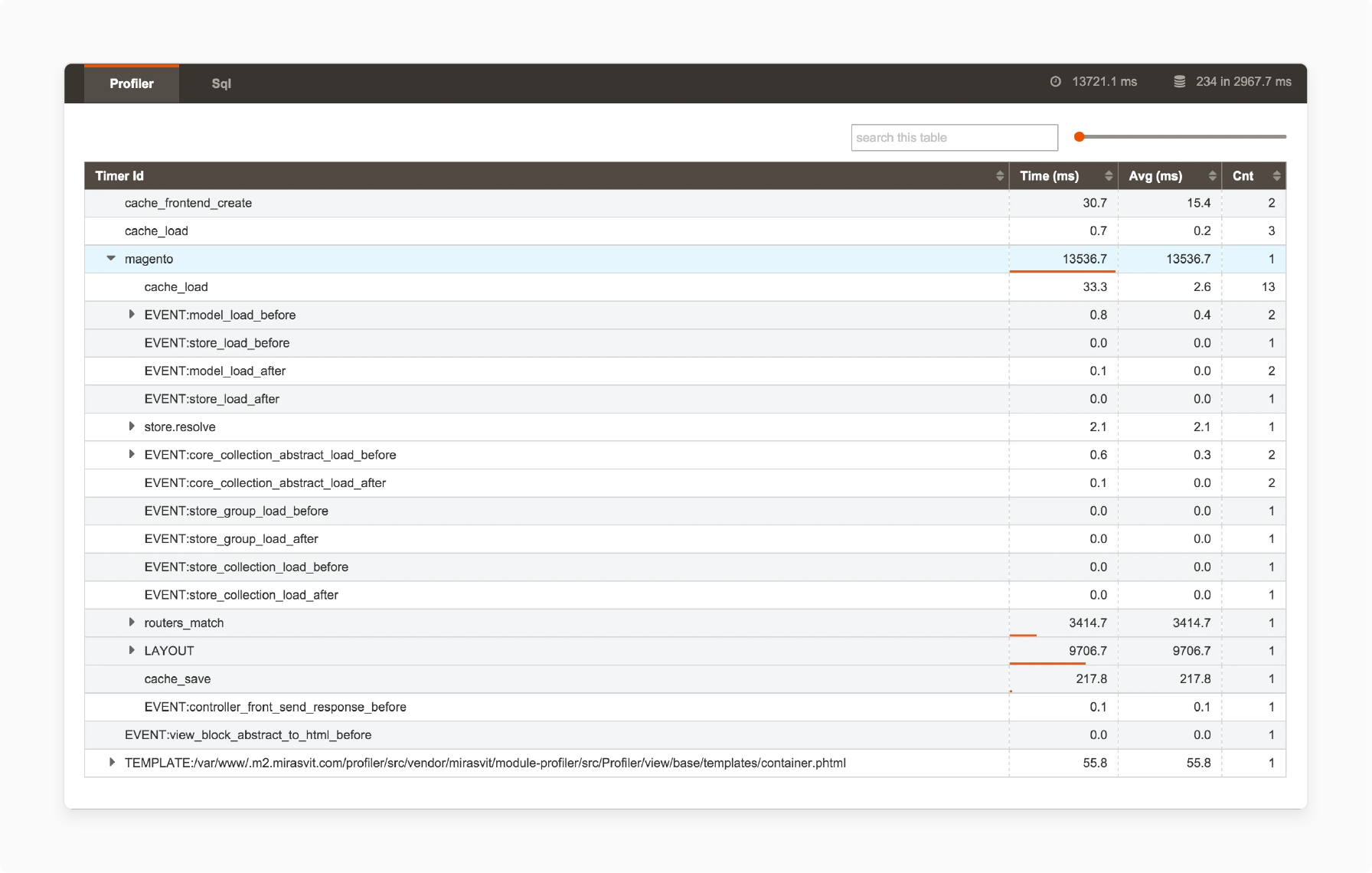
Magento Profiler is a tool for measuring code execution time and memory usage. It helps identify performance bottlenecks and optimize critical code.
Key Highlights:
-
Allows profiling specific code sections with timers.
-
Provides a summary report of execution times and memory.
-
Supports hierarchical timers for drilling down into methods.
-
Enable/Disable the tool via config for production use.
II. Blackfire
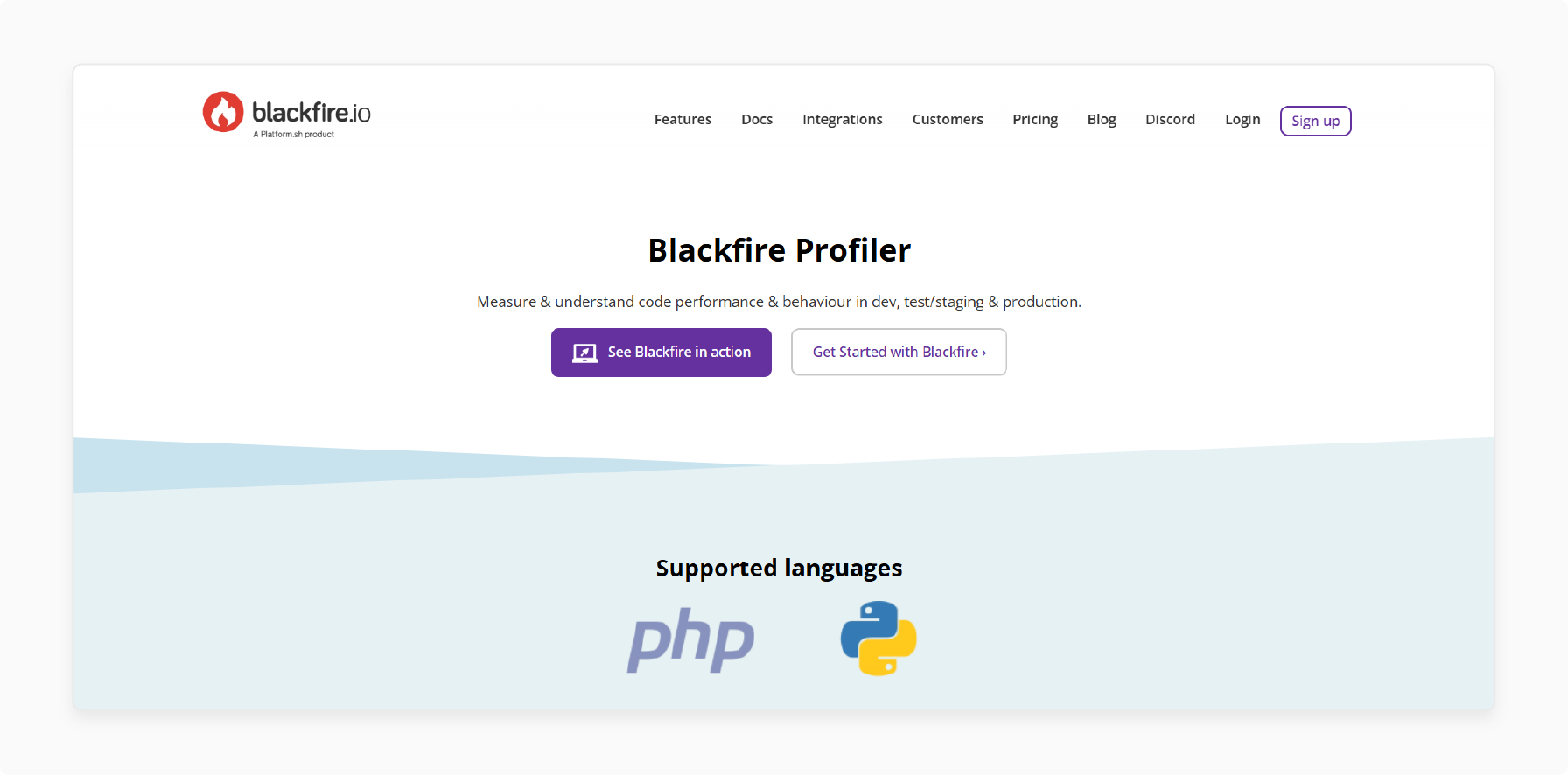
Blackfire is a code performance measurement tool. It identifies bottlenecks and provides insights. The tool also offers more advanced profiling than the built-in Magento Profiler.
Key Highlights:
-
It provides a web interface for analyzing profile data.
-
It identifies the slowest methods and database queries.
-
The tool offers suggestions for optimizing code and database interactions.
-
It supports profiling Magento CLI commands and web requests.
III. New Relic
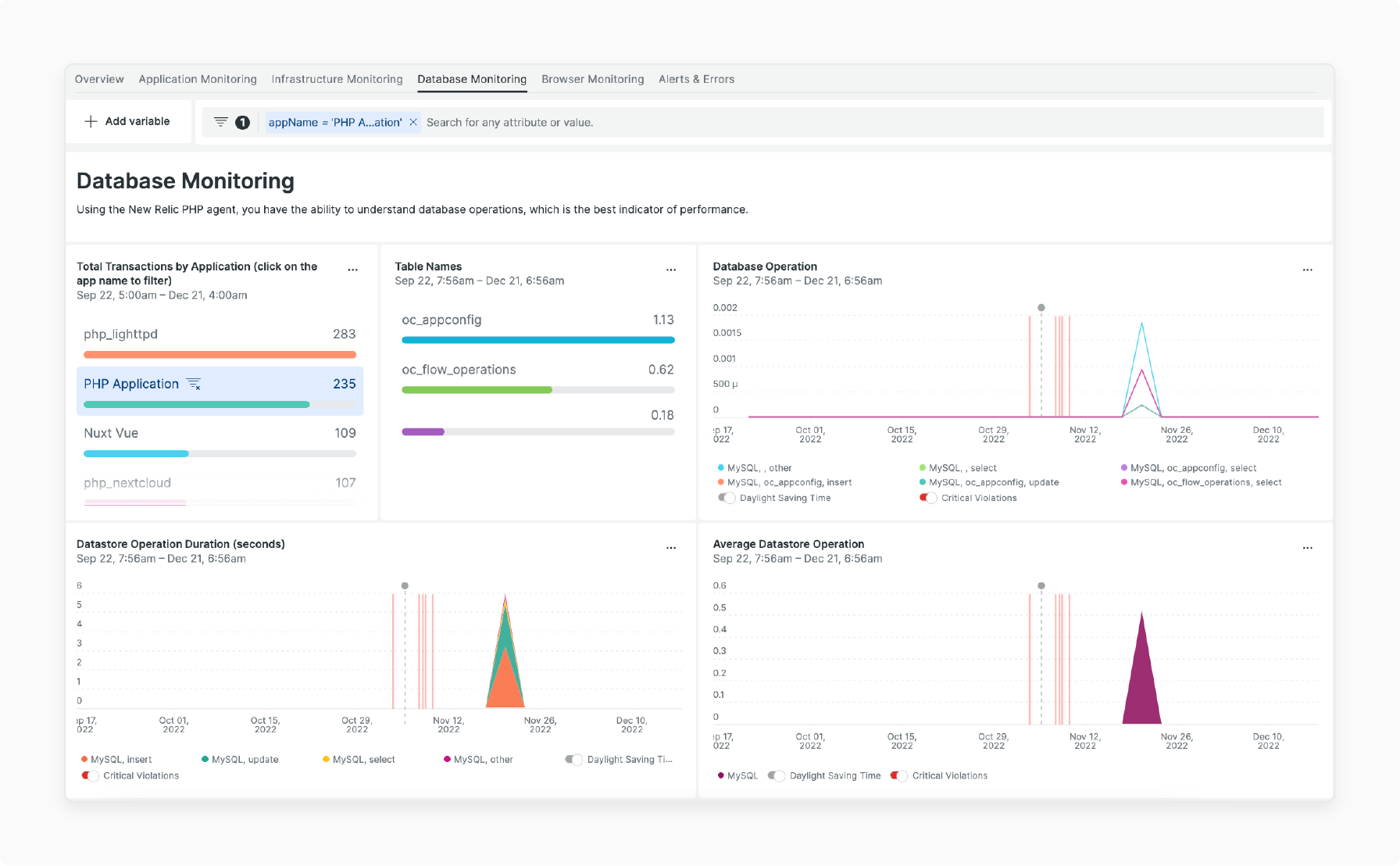
New Relic is an Application Performance Monitoring tool that tracks data and errors. It helps identify and diagnose issues in real time.
Key Highlights:
-
Provides a dashboard with key performance metrics and trends.
-
Allows drilling down into specific transactions and code traces.
-
Offers alerting and anomaly detection for proactive issue resolution.
-
Includes tools for database query analysis and optimization.
7. Productivity Tools
I. n98-magerun2
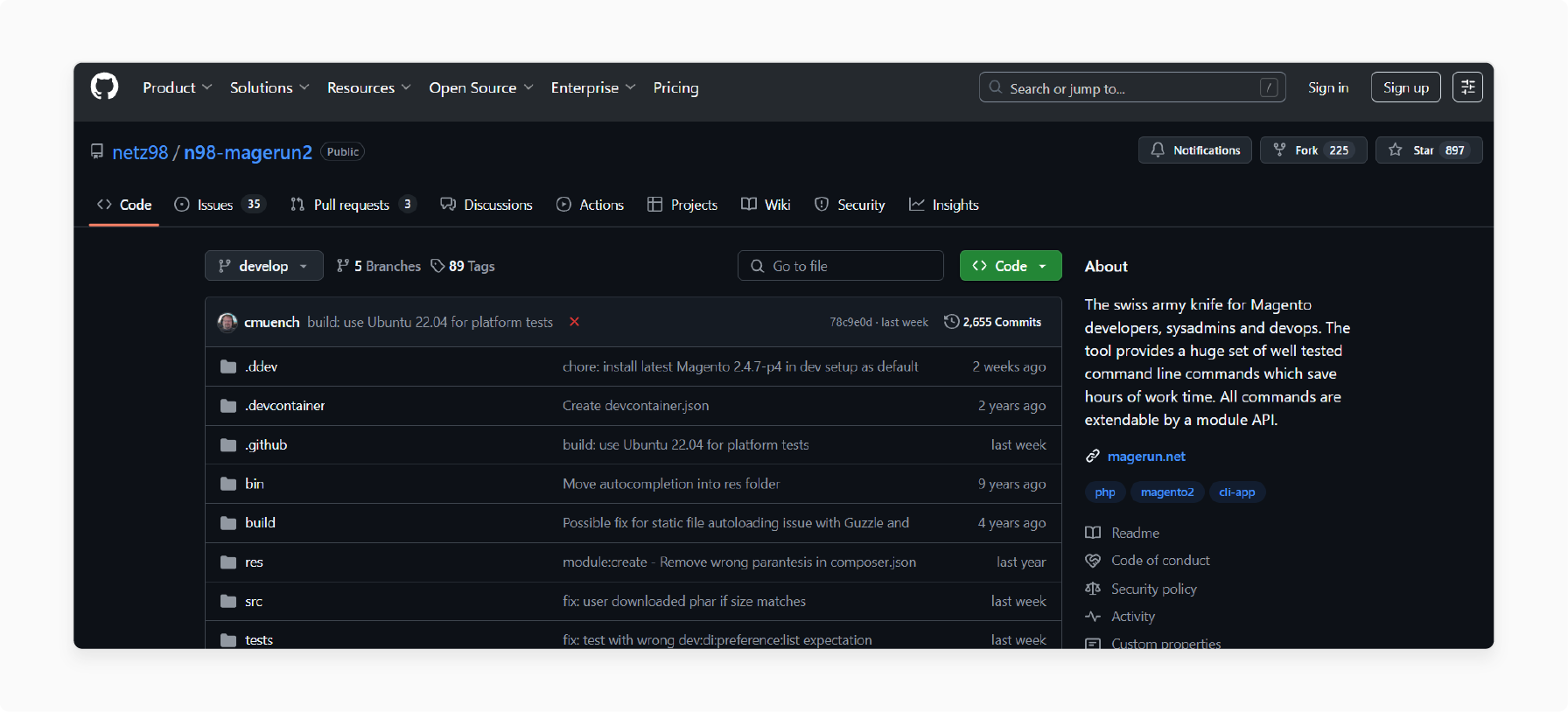
n98-magerun2 is a command-line tool that executes Magento 2 CLI commands. It provides a user friendly interface vs the built-in Magento CLI. The tool boasts autocompletion and interactive prompts.
Key Highlights:
-
Offers a wide range of commands for common Magento tasks.
-
Supports generating boilerplate code for modules, controllers, and more.
-
Provides tools for database migration and maintenance.
-
Allows scripting and automation of complex tasks.
II. Pestle
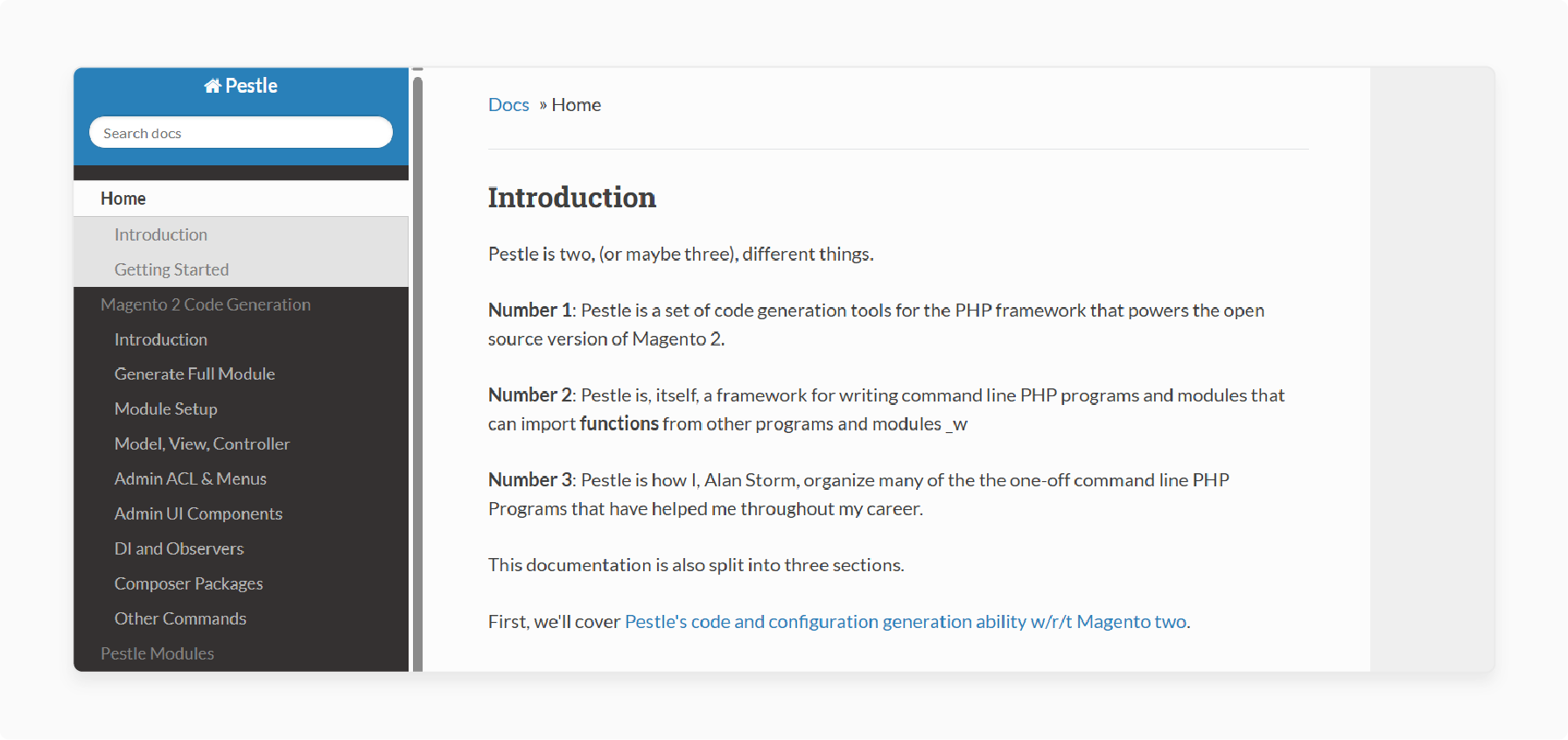
Pestle is a code generation tool for Magento 2 modules and themes. The tool scaffolds the basic structure of a custom module or theme. It saves time on boilerplate code.
Key Highlights:
-
Provides commands for generating module and theme files.
-
Supports generating models, controllers, blocks, and other components.
-
Offers interactive prompts for configuring module and theme options.
-
Extend it with custom code generation templates.
III. Warden
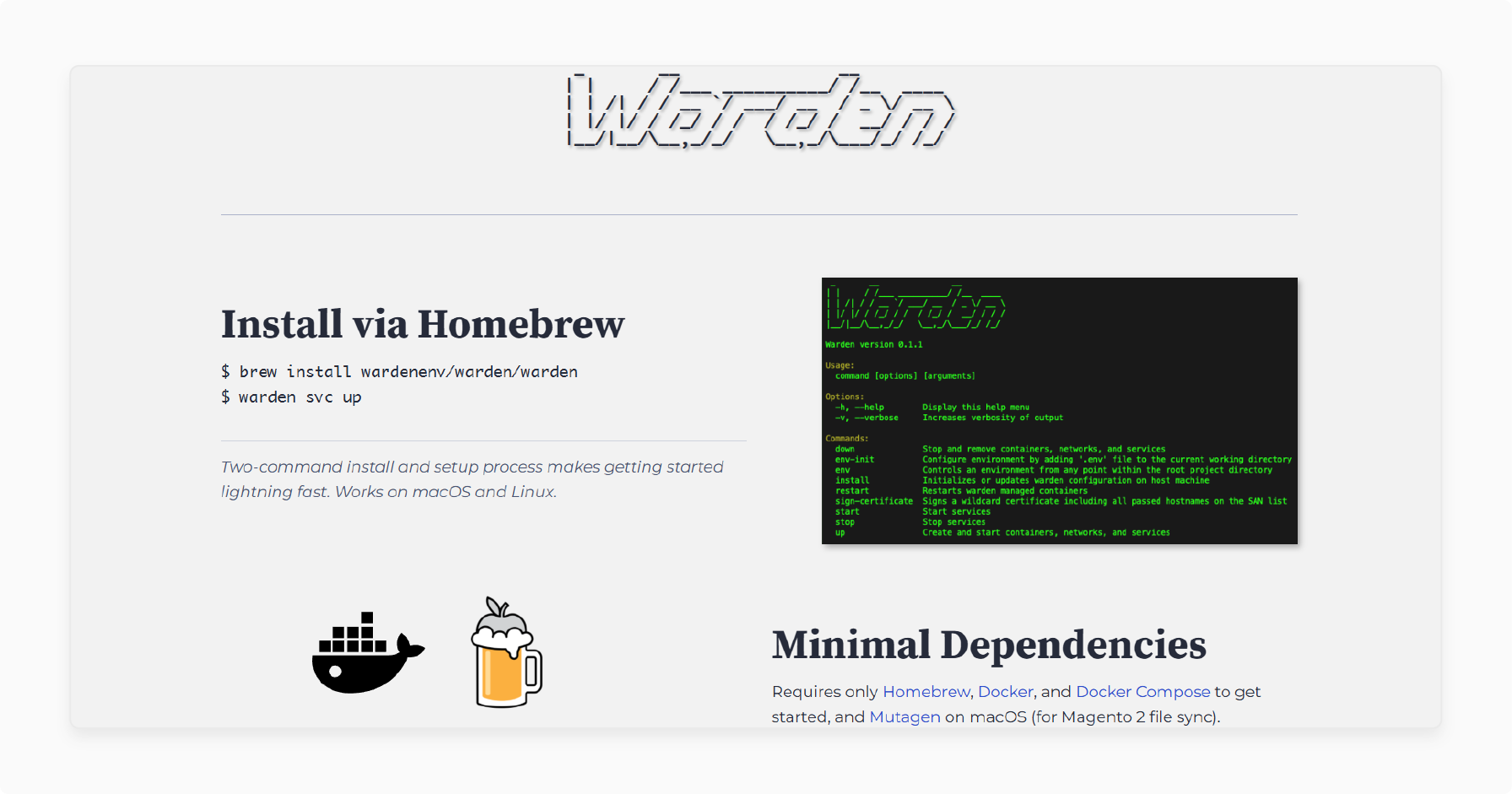
Warden is a tool for managing local Magento 2 dev environments with Docker. It provides a consistent, reproducible environment for development and testing. It eliminates the need for manual setup.
Key Highlights:
-
Offers pre-configured Docker images for Magento 2 and common services.
-
Supports one-command setup and teardown of dev environments.
-
Allows customizing the environment config via YAML files.
-
Provides tools for database and file sync with production.
Note: These tools are a sample of the many options available. The specific tools you choose depend on your needs and preferences.
How do you integrate the Developer tools with Magento 2?
Step 1: Installation and Configuration
-
Install tools via Composer or as Magento 2 extensions.
-
Configure tools in Magento's admin panel or config files.
-
Set up IDE plugins for seamless integration with Magento.
-
Enable debugging features in Magento's developer mode.
-
Adjust PHP settings to work with debugging tools.
Step 2: Code Development
-
Use PHPStorm's Magento 2 plugin for code completion.
-
Leverage live templates for faster Magento 2 coding.
-
Access Magento's core files within your IDE.
-
Generate boilerplate code using Magento CLI commands.
-
Use version control integration for collaborative development.
Step 3: Debugging and Testing
-
Set breakpoints in Magento code using Xdebug.
-
Use Magento Debug to inspect request and response data.
-
Run unit tests with PHPUnit framework integration.
-
Use EcomDev PHPUnit for Magento-specific test scenarios.
-
Use Magento's built-in profiler for performance analysis.
Step 4: Frontend Development
-
Enable template path hints for easy theme customization.
-
Use Grunt/relevant tool for automatic CSS and JS compilation.
-
Leverage browser developer tools for frontend debugging.
-
Put in place Vue Storefront for headless Magento setups.
-
Use Magento's layout XML for structural changes.
Step 5: Database Management
-
Use Magento Debug to inspect request and response data.
-
Use n98-magerun2 for database operations via CLI.
-
Use Magento's setup scripts for database changes.
-
Use MySQL Workbench for visual database design.
-
Install data fixtures for testing with sample data.
Step 6: Deployment and Maintenance
-
Use Magento Cloud CLI for cloud deployments.
-
Continuous integration with tools like Jenkins should be implemented.
-
Use New Relic for production performance monitoring.
-
Use MageTools for routine maintenance tasks.
-
Use Magento's built-in caching for optimized performance.
Best Tips to Use the Magento Developer Tools
1. Familiarize Yourself with the Tools
-
Take time to learn each tool's features and capabilities. Read the documentation for each Magento development tool.
-
Practice using the tools on test projects before real ones. Join online communities to learn tips from other developers. Watch tutorial videos to see the tools in action.
2. Use Debugging Tools
-
Enable debugging tools only when troubleshooting issues. Set specific breakpoints to pause code at key points.
-
Use variable inspection to understand data flow through your code. Leverage stack traces to identify the source of errors.
-
Disable debugging when not needed to avoid performance impacts.
3. Leverage Code Generation Features
-
Use code generation tools to create boilerplate code. Generate module scaffolding to save time on repetitive tasks.
-
Create custom code templates for used patterns. Automate the creation of configuration files and class structures.
-
Review and customize the generated code as needed.
4. Optimize Your Development Environment
-
Configure your IDE for Magento 2 development. Install relevant plugins to enhance Magento 2 compatibility.
-
Set up live templates for common Magento 2 code snippets. Use version control integration for easier code management.
-
Customize your workspace layout for maximum productivity.
5. Use Performance Profiling
-
Run regular performance profiles during development.
-
Identify slow database queries and optimize them. Look for memory leaks and address them.
-
Use timeline tools to understand page load sequences. Compare performance before and after code changes.
6. Embrace Test-Driven Development
-
Write unit tests for new features before implementation. Use PHPUnit to automate the testing of Magento 2 modules.
-
Create integration tests to verify component interactions. Put in place functional tests to confirm user workflows.
-
Run your test suite to catch issues early.
FAQs
1. Is it possible to integrate third-party debugging tools with an existing store?
Third-party debugging tools integrate with your existing store. Enable the CedCommerce Developer Debug Tool through configuration in the admin panel. Tools like Xdebug, Magento Debug, and Commerce Bug install via Composer or extensions. It comes with IP restrictions to keep development from the live environment.
2. How can the PHPStorm Magento extension improve my development workflow?
The PHPStorm Magento 2 extension increases productivity. It provides "live templates and code structure analysis" with "GraphQL navigation line markers". With Magento-specific code completion, testing, and debugging, developers save considerable time.
3. What tools are essential for debugging database issues in Magento 2?
For Magento admin and MySQL database troubleshooting, several tools excel. N98-magerun offers "enhanced functionality" for database management. Adminer and MySQL Workbench provide visual database inspection. The Magento development toolbar displays real-time database queries during page loads. It identifies performance bottlenecks in your store.
4. How can I test store performance before going live?
Google Page Speed Insights has limited value for universal platform testing. Use JMeter for load testing, Blackfire for profiling, and Magento-specific performance tools to identify bottlenecks. It ensures your ecommerce platform handles expected traffic volumes.
5. What developer tools help improve the security of Magento 2 websites?
Security-focused tools are essential for Magento websites. Magento's Security Scan, Mage-One Security Patches, and MageReport identify vulnerabilities. Mage2Gen creates secure module templates. PHP_CodeSniffer and PHPStan ensure your code follows security standards.
Summary
The Magento 2 developer tools solve major and debugging issues of any type. This article explained the top tools developers use with their best practices. Here is a recap:
-
Magento 2 development tools streamline the workflow for existing developers.
-
A developer debug toolbar, like PhpStorm, offers layout rendering benefits.
-
Tools you'll need include Xdebug for debugging PHP programs.
-
The best Magento extensions provide secure test database connection capabilities.
-
Top Magento development tools help web developers get online business results.
Choose managed Magento hosting with developer tools to enhance performance and growth.
[Updated on May 13, 2025]

